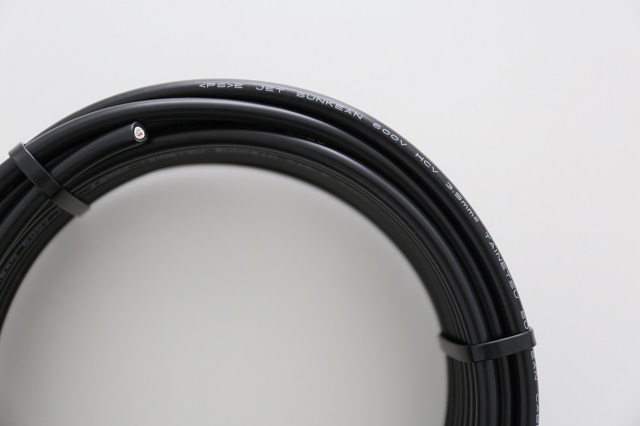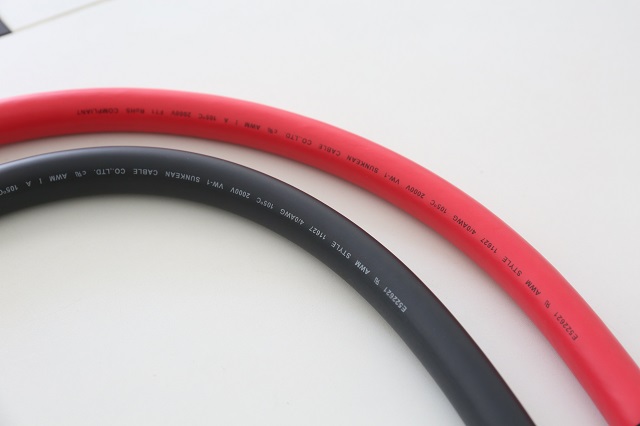I. Introduction
A. The standard of choosing suitable material for cables
Selecting the right material for electrical cables is a decision that carries significant weight in various industries and applications. The choice between copper and aluminum, the two most commonly used materials for cables, is a critical aspect of designing and implementing electrical systems.
The standard of choosing suitable material for cables depends on a variety of factors, each playing a crucial role in determining the optimal solution for a particular application. Factors such as conductivity, heat resistance, cost efficiency, durability, safety considerations, and environmental impact all come into play when evaluating cable materials.
II. Comparison of the conductivity of copper and aluminum cables
A. Discussion on the conductivity of copper and aluminum cables

Copper Cables: Copper has long been recognized as one of the most conductive metals available, making it the preferred choice for many electrical applications. Its excellent conductivity allows for the efficient flow of electricity, minimizing power losses and ensuring reliable transmission. Copper cables are widely used in various industries where high performance and reliability are paramount, such as power distribution, telecommunications, and electronics.
Aluminum Cables: While not as conductive as copper, aluminum is still a popular choice for electrical cables due to its lighter weight and lower cost. However, aluminum's conductivity is lower than that of copper, which can result in higher resistance and greater power losses. As a result, aluminum cables may require larger cross-sectional areas to achieve comparable performance to copper cables in certain applications.
Considerations: When comparing the conductivity of copper and aluminum cables, it's essential to consider the specific requirements of the application. While copper offers superior conductivity, aluminum may be a more cost-effective option for installations where weight and cost considerations are significant factors. However, in applications where conductivity and efficiency are paramount, copper remains the material of choice due to its unparalleled electrical performance.
B. Impact of conductivity differences on the performance of electrical systems
Efficiency: Higher conductivity means lower electrical resistance, resulting in reduced power losses during transmission. Copper's superior conductivity allows for more efficient energy transfer, making it an excellent choice for applications where energy efficiency is a priority. On the other hand, aluminum cables, with their lower conductivity, may experience higher resistance and greater energy losses, potentially impacting the overall efficiency of the system.
Voltage Drop: Conductivity differences also affect voltage drop, which refers to the decrease in voltage along the length of a cable due to its inherent resistance. Copper cables typically exhibit lower voltage drop compared to aluminum cables of the same size and length, thanks to their higher conductivity. Minimizing voltage drop is essential for maintaining voltage stability and ensuring reliable operation of electrical equipment.
Heat Generation: Higher resistance in aluminum cables can lead to increased heat generation during operation. This excess heat not only wastes energy but also poses a risk of overheating, potentially causing damage to the cables and surrounding components. Copper cables, with their lower resistance and superior conductivity, generate less heat, contributing to safer and more reliable operation.
Practical Considerations: While copper's higher conductivity offers undeniable advantages in terms of efficiency and performance, it's essential to consider practical factors such as cost and weight. Aluminum cables, despite their lower conductivity, may still be a viable option in applications where cost savings and reduced weight are significant considerations.
III. Comparison of the heat resistance of copper and aluminum cables

A. Discussion on the heat resistance properties of copper and aluminum
Copper Cables: Copper cables are renowned for their excellent heat resistance properties. Copper has a high melting point and exhibits good thermal conductivity, allowing it to dissipate heat efficiently. This inherent heat resistance makes copper cables well-suited for applications where high temperatures may be encountered, such as industrial settings or outdoor installations exposed to sunlight.
Aluminum Cables: While aluminum cables also offer decent heat resistance, they generally have lower thermal conductivity compared to copper. As a result, aluminum cables may be more susceptible to heat buildup, especially in high-current applications where resistance-induced heating is a concern. However, advancements in aluminum cable design and insulation materials have improved their heat resistance capabilities in recent years.
Practical Considerations: When selecting between copper and aluminum cables based on heat resistance, it's essential to consider the specific requirements of the application. Factors such as ambient temperature, current load, and environmental conditions play a significant role in determining the optimal cable material. Additionally, proper cable insulation and installation techniques can help mitigate heat-related issues and ensure reliable performance.
B. How heat resistance affects the conductivity of cables
Copper Cables: Copper is renowned for its excellent conductivity and heat resistance properties. Even at high temperatures, copper cables maintain their conductivity, allowing for efficient transmission of electrical signals. The high melting point of copper ensures that it remains structurally stable and does not degrade under heat stress, contributing to the reliability of copper-based electrical systems.
Aluminum Cables: Aluminum cables also exhibit decent heat resistance, but their conductivity may be more affected by elevated temperatures compared to copper. As the temperature increases, the resistance of aluminum cables tends to rise, leading to potential losses in conductivity. This phenomenon, known as thermal expansion, can result in increased resistance and reduced efficiency in aluminum-based electrical systems operating at high temperatures.
Practical Considerations:When selecting between copper and aluminum cables based on heat resistance and conductivity, it's essential to consider the specific requirements of the application. In environments where temperature fluctuations are common or where cables are exposed to heat sources, copper cables may offer a more reliable solution due to their superior conductivity and heat resistance.However, in applications where cost and weight considerations are significant factors, aluminum cables may still be a viable option despite their slightly lower conductivity and heat resistance. Proper insulation and cooling measures can also help mitigate the effects of heat on cable performance, ensuring reliable operation even in challenging conditions.
IV. Cost Efficiency and Performance of copper and aluminum cables

A. Analysis of the cost differences between copper and aluminum cables
Copper Cables: Copper is a precious metal with a higher intrinsic value compared to aluminum. As a result, copper cables tend to have a higher initial cost per unit length compared to their aluminum counterparts. The cost of copper cables is influenced by factors such as market demand, global supply dynamics, and fluctuations in metal prices.
Aluminum Cables: Aluminum is more abundant and less expensive than copper, making aluminum cables generally more cost-effective in terms of raw material costs. The lower cost of aluminum contributes to significant cost savings, especially in large-scale electrical installations where long lengths of cable are required.
Installation Costs:
Copper Cables: While copper cables may have a higher initial cost, they often offer advantages in terms of installation efficiency and ease of termination. Copper's superior conductivity allows for smaller cable sizes and reduced voltage drop, which can result in lower installation costs and labor expenses over the long term.
Aluminum Cables: Aluminum cables are lighter and more flexible than copper cables, making them easier to handle and install, especially in large-scale projects. However, aluminum's lower conductivity may require larger cable sizes to achieve comparable performance to copper, potentially offsetting some of the initial cost savings.
B. Balancing cost considerations with performance requirements
Application Requirements: Assess the performance requirements of the electrical system and determine whether the higher conductivity and reliability of copper cables are necessary for optimal operation.
Budget Constraints: Consider the upfront cost of materials and installation, as well as potential long-term maintenance and replacement expenses, to determine the most cost-effective solution for the project.
Environmental Factors: Evaluate the operating environment and potential risks of corrosion, moisture, and temperature fluctuations to ensure that the selected cables can withstand the conditions without compromising performance.
Future Expansion: Anticipate future growth and scalability requirements of the electrical system, and choose cables that can accommodate future upgrades and modifications without significant cost implications.
V. Comparison of the durability and longevity of copper and aluminum cables
A. Examination of the durability of copper and aluminum cables
Copper Cables:Copper cables are renowned for their exceptional durability and longevity. Copper is a highly resilient metal that can withstand a wide range of environmental conditions, including moisture, temperature fluctuations, and mechanical stress. Additionally, copper's resistance to corrosion ensures that it maintains its structural integrity over time, even in harsh operating environments.
Aluminum Cables:While aluminum cables also offer decent durability, they may be more susceptible to certain environmental factors compared to copper. Aluminum is prone to corrosion when exposed to moisture or chemicals, which can weaken the cable over time and compromise its performance. Additionally, aluminum's lower tensile strength and flexibility may make it more prone to damage from mechanical stress or bending.
B. Maintenance considerations for prolonging the lifespan of cables
Regular Inspection:Performing regular visual inspections of cables is crucial for identifying potential issues such as corrosion, damage, or wear. Inspect cables for signs of physical damage, such as cuts, abrasions, or kinks, which can compromise their integrity and performance. Additionally, check for signs of corrosion, especially in environments where moisture or chemicals are present.
Cable Protection:Protecting cables from environmental factors such as moisture, heat, and mechanical stress is essential for prolonging their lifespan. Use appropriate cable insulation, jackets, and protective covers to shield cables from moisture, chemicals, UV radiation, and abrasion. Install cables in conduits or cable trays to minimize exposure to physical damage and environmental hazards.
Proper Installation:Ensure that cables are installed correctly according to manufacturer specifications and industry standards. Avoid excessive bending, twisting, or stretching during installation, as this can damage the cable and affect its performance. Use appropriate cable supports and strain relief devices to prevent mechanical stress and maintain cable integrity.
VI. Conclusion
If you are interested in high-quality cables and comprehensive after-sales service, welcome to visit SUNKEAN, where there are all kinds of latest cable products you need. If you have any needs, you can leave a message to our salesman, thank you for your coordination. Email: sales@sunkean.com